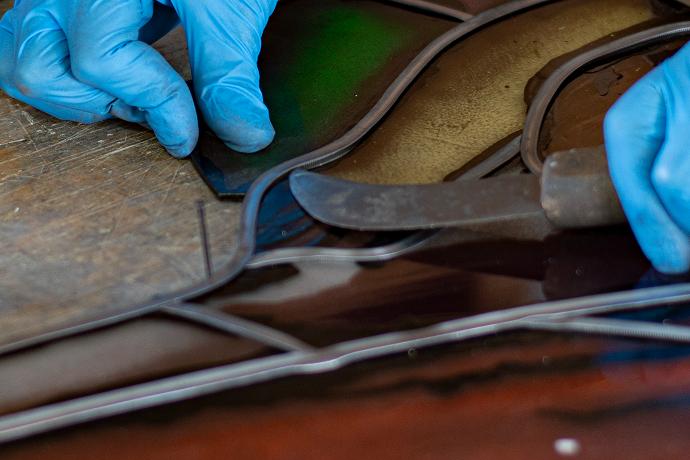STAINED GLASS TECHNIQUE
Stained glass refers to a technique of creating an image on the glass involving colored or painted pieces of glass joined together with lead profiles. The daylight that passes through the images created in this way revives them, changes from moment to moment and gives the space an aesthetic quality like no other painting technique. The tradition of making windows from colored glass began in ancient times, in Babylon and Egypt. In Islamic culture, stained glass windows are largely responsible for the beauty of mosques, palaces and other public spaces. In the East, stained glass windows were not pictorial and had a purely geometric design, but they could also contain floral motifs and text.
In the European cultural circle, stained glass reached its peak in the Gothic era. In contrast to the East, where geometric solutions ran the show, figurative expression is extremely important in the West. As a sort of "Bible for the poor" in the complex system of Christian iconography, stained glass is also an opportunity for many artists and craftsmen to show all the splendor of talent and skills they have developed through scenes from the lives of Jesus, Virgin Mary and other saints.
In the present day, stained glass has not lost its popularity – on the contrary, modern architecture of religious buildings is often a great vessel for plays of light and color. Today’s artists respond to this challenge with their works that are close and familiar to the modern man. We at Bokart have preserved the knowledge of the traditional technique of stained glass with improved technological solutions and materials, all in order to ensure the quality and durability of these important elements of architecture.
 Stacking of stained glass segments
Stacking of stained glass segments Arrangement of all elements
Arrangement of all elements Preparation
Preparation Stained glass production
Stained glass production Firing of stained glass segments
Firing of stained glass segments Stained glass production
Stained glass production
 Stained glass production
Stained glass production Welding
Welding